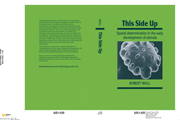Book contents
- Frontmatter
- Contents
- Preface
- Acknowledgements
- 1 Oogenesis
- 2 From oocyte to zygote
- 3 Does cleavage cut up a preformed spatial pattern?: the case of spiralian embryos
- 4 The limits of mosaicism in non-spiralian cleavage
- 5 Cellular interactions in the morula and blastula: the case of sea urchin embryos
- 6 Interactions at morula and blastula in other embryos
- 7 Interactions between moving cells: the case of amphibian gastrula
- 8 Spatial determination in the gastrulae of other groups
- 9 Determination in embryos showing partial cleavage
- 10 Patterns and mechanisms in early spatial determination
- References
- Index
2 - From oocyte to zygote
Published online by Cambridge University Press: 06 October 2009
- Frontmatter
- Contents
- Preface
- Acknowledgements
- 1 Oogenesis
- 2 From oocyte to zygote
- 3 Does cleavage cut up a preformed spatial pattern?: the case of spiralian embryos
- 4 The limits of mosaicism in non-spiralian cleavage
- 5 Cellular interactions in the morula and blastula: the case of sea urchin embryos
- 6 Interactions at morula and blastula in other embryos
- 7 Interactions between moving cells: the case of amphibian gastrula
- 8 Spatial determination in the gastrulae of other groups
- 9 Determination in embryos showing partial cleavage
- 10 Patterns and mechanisms in early spatial determination
- References
- Index
Summary
Several important events separate the oocyte from the zygote that is genetically the starting point of the new individual. Over the same period, ooplasmic flows commonly occur with great effects on spatial arrangements and often on developmental localisations.
The events
Briefly, the events of this period are: 1) the completion of the maturation divisions, 2) various kinds of cytoplasmic maturation, 3) release of the oocyte from the ovary (ovulation) and 4) fertilisation. The sequence of these processes varies among different animal groups and they frequently overlap in time. They are of interest here only where they may affect spatial organisation, and so will be reviewed extremely briefly. Reference is made to reviews from which further details may be obtained.
Maturation is usually initiated hormonally, and involves widespread physiological changes (for reviews see Masui & Clarke, 1979; Meijer & Guerrier, 1984; Mailer, 1985; Sardet & Chang, 1987). Rates of many activities, such as respiration and protein synthesis, usually increase, and there are often qualitative changes in the species of protein synthesised. Meiosis resumes, starting with germinal vesicle breakdown (GVBD), but often arrests again at a later stage until fertilisation. The meiotic events are accompanied by cyclic changes in the organisation of cortical microtubules, and the consistency of the general cytoplasm also seems to change. The annulate lamellae vesiculate and disperse, and shells of endoplasmic reticulum form around the cortical granules making close junctions with the surface in an apparent preparation for fertilisation.
- Type
- Chapter
- Information
- This Side UpSpatial Determination in the Early Development of Animals, pp. 31 - 67Publisher: Cambridge University PressPrint publication year: 1990
- 1
- Cited by



